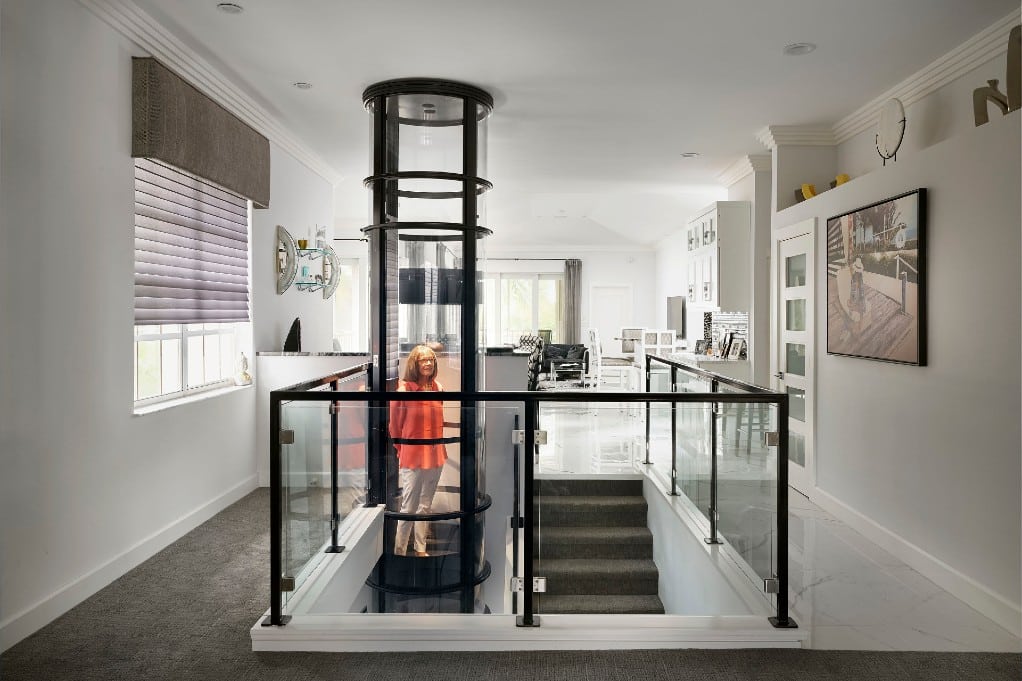An elevator must be a crucial element of your home. Not only does a home elevator improve safety, but also helps with mobility issues for senior citizens. However, as with any technology installation, home elevator safety must be considered. Otherwise, its ignorance can significantly impact your well-being.
The National Elevator Industry estimates elevators offer 18 billion passenger rides in the U.S. annually. Despite the safe arrival of billions of passengers, people have a severe fear of elevators, also known as elevator phobia. That’s why modern home elevators have various safety features to ensure smooth and secure operation for everyone, from seniors to children.
Another factor that can help reduce this fear is having adequate knowledge about elevators. If you don’t know how to use a home elevator or if you fear it, you can face the complexities of elevator mental health.

In this blog, you’ll learn which hazards can influence home elevator safety and modern safety features to ensure a smooth ride in an elevator.
What Are the Hidden Fears Surrounding Home Elevator Safety?
If you use an unsafe home elevator, it can trigger deep-seated fears and anxieties. Many residents worry about accidents or malfunctions, which can cause vulnerability and unease. Moreover, getting stuck, facing sudden drops, or encountering malfunctioning doors can create significant stress.
This is particularly true for those with mobility issues or who are responsible for the safety of others in the household. These fears are often caused by a lack of confidence in the elevator’s reliability and safety. If you want to alleviate anxiety, you must address these concerns through regular maintenance. Furthermore, understanding modern safety features ensures that the home elevator remains a secure and dependable means of transportation.
Top 4 Health Risks of Improper Elevator Use
Nationally, elevators move billions of people each year. According to the U.S. Bureau of Labor Statistics and the Consumer Product Safety Commission, on average, only about 27 deaths occur. Although the death toll is low, we can still work on it.
Various injuries, minor or severe, occur and often go unreported. Elevator accidents can be overcome with greater public awareness and thorough elevator inspections.
Door Strikes:
The most common home elevator injury is when a closing elevator door strikes someone. This door strike injury generally occurs while someone is entering the elevator. The elevator doors must be closed at a rate that would make injury unlikely. Unfortunately, many elevator inspectors miss or do not consider it. They take it for granted and assume the doors operate within specifications and codes.

Awareness about Door strikes:
Many people need to realize that there are two doors in the home elevator. The first is an inside door seen inside the elevator car (called the car door). The second one is a landing door seen when waiting for the elevator (called the landing door).
The car door opens, both itself and the landing door. The sensor reopens the door when a person is in front of it, but the landing door sensor can’t sense when a person is in front of it. If the door’s closing speed is too high when it strikes a person, the resulting injury could be severe. Door strikes are a common liability item for building owners, so consult an expert manufacturer, like PVE, for home elevator installation.
Leveling:
Another common issue that leads to disturbed elevator mental health is the tripping hazard. This hazard is related to an elevator’s ” leveling. “Home elevators can get out of level with regular use. According to current regulations, an elevator must have a one-1/4 “gap between the car sill and the landing sill.
The elevator can also be up to ½ inches above level relative to the landing sill. If there is a gap between the sills and the difference in level, then people can trip and fall while getting on or off the elevator.
Furthermore, the heels on shoes could also be caught in these gaps. The elevator violates the code if leveling is more than ½ inches out of level. The facility managers need to arrange to have the elevator adjusted.

4 Models To Choose From
Are you looking for an in-home elevator? Simply pick your favorite below to learn more.
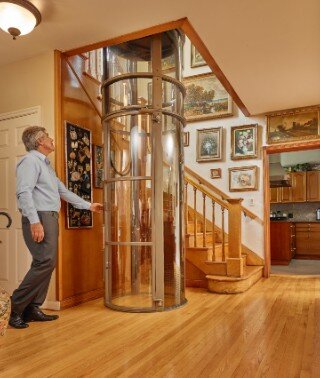
PVE30 - Home Elevator
Single Passenger Residential Elevator
Space-Saving Solution
Exterior Diameter
30 Inches
(750 millimeters)
Maximum Weight
350 Pounds
Rated: 1 Person
Per Use
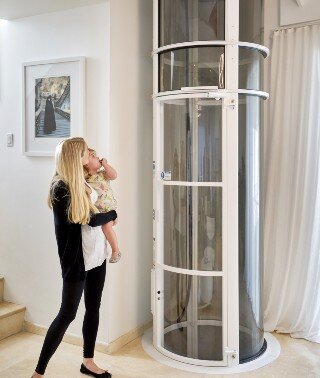
PVE37 - Home Elevator
Two Passenger Residential Elevator
Flexible & Dynamic Lift
Exterior Diameter
37 Inches
(933 millimeters)
Maximum Weight
450 Pounds
Rated: 2 People
Per Use
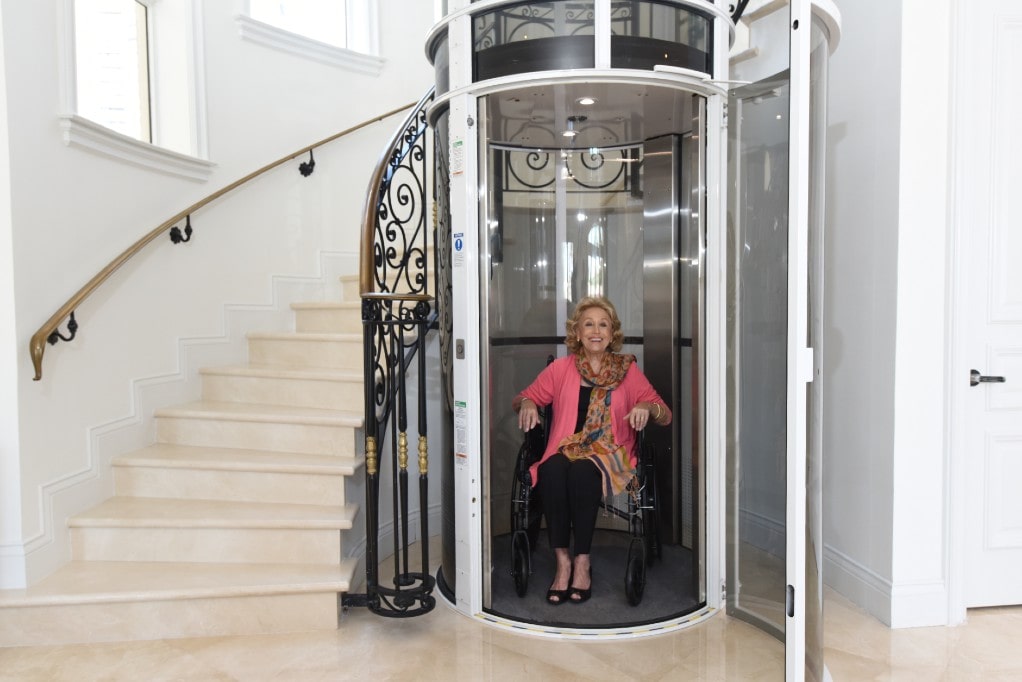
PVE52 - Home Elevator
Three Passenger Residential Elevator
Wheelchair Accessible Lift
Exterior Diameter
52 - 11/16 Inches
(1,316 millimeters)
Maximum Weight
525 Pounds
Rated: 3 People
Per Use
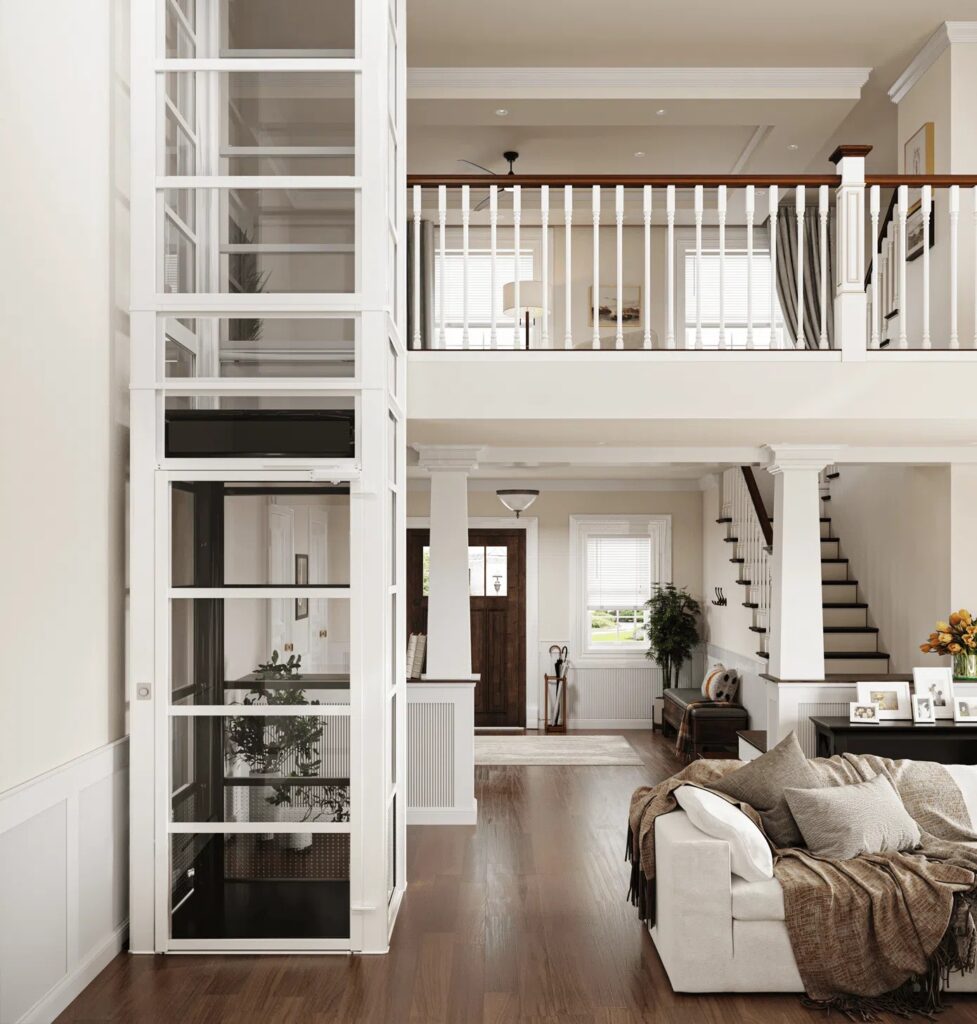
The Cube - Home Lift
Two Passenger Residential Elevator
Affordable Alternative To Stairs
Exterior Diameter
52 - 11/16 Inches
(1,316 millimeters)
Maximum Weight
450 Pounds
Rated: 2 People
Per Use
Entrapment:
Another elevator fear is being trapped in an elevator, also known as entrapment. All the homes must have an emergency evacuation procedure. Hence, people can safely evacuate from a stopped elevator, even between floors. When facility managers are not adequately trained or are unaware of the proper procedure for evacuating residents in an elevator, then fatal mistakes can occur.
Awareness about Entrapment:
When an elevator is above a landing, and a person tries to get out, he loses his balance. He falls back toward the elevator, slipping underneath and into the hoistway. This is the most common home elevator accident, resulting in death. Training is required if you want to rescue yourself from an elevator accident.

Fear of Going Down:
If you ride a creaky elevator down, it can be scary. In this home elevator, each jolt and noise can increase your heart rate and quicken your breathing. You feel anxious in the small space and worry about getting stuck. You have the fear of the elevator breaking and the doors not opening. As the elevator goes down, your fear of falling gets worse. In addition, if the independence elevator moves at high speed, you can be thrown onto the floor or into the walls. This can cause serious injuries, such as spine, back, knee, or head injuries. These accidents often happen when the control system fails to detect that the elevator is going too fast or counterweights work improperly.
Home Elevator Improve Safety: Modern Safety Features
Like anything else, riding an elevator carries a small risk. However, you can minimize this risk by using safety measures. Thus, the Elevator Escalator Safety Foundation educates people about using elevators and how to ride them safely.
1. Multiple Cables:
Today, a convenience elevator is supported by multiple cables. Each of these is strong enough to carry more than the weight of a fully loaded elevator car.
2. Emergency Brake System:
The emergency brake and speed governor can prevent the elevator from free-falling if all cables were to snap.

3. Leveling Mechanisms:
Leveling mechanisms prevent elevator doors from opening while the car is between floors. The doors should only open when the vehicle is aligned correctly at the landing. Consequently, this can prevent the doors from opening between the floors, and you can save your life instead of waiting for help. In addition, it makes it virtually impossible for you to fall down the shaft. The shaft is the space between the elevator car and the outer doors.
4. Emergency Assistance:
Safety elevator cars have emergency systems in place, including a phone, alarm bells, and intercoms. These systems allow passengers to call for help in rare events, like when an elevator gets stuck. When you are in an elevator with no power outage, the elevator should move to the next floor and stop. It opens its doors to let passengers out, but it will no longer operate while the power is out. However, emergency systems remain operational if the elevator is stuck so that you can call for help.
5. Ventilation:
Calm down. Elevators are not airtight, and stuck passengers are in no danger of running out of air. There are specific ventilation requirements that prevent passengers from running out of air, though it may get stuffy if crowded.
6. Optional Features:
Some of the latest elevators are designated “safe rooms.” They may include air purifying systems to remove toxic gases or smoke from elevator cars and replace it with breathable air, making the room the safest place in certain circumstances.
Final Thought:
In conclusion, it is crucial to understand how a home elevator can improve safety and what steps one must take in this regard. This ensures both peace of mind and physical safety for all users. As you know, billions of rides are taken annually; the low incidence of severe accidents shows the safety of modern elevators. Yet, it is essential to remain vigilant. Awareness of potential hazards such as door strikes, improper leveling, and entrapment can significantly reduce risks.
A luxury home lift has various safety features to protect passengers. Innovations such as multiple support cables, emergency brake systems, and advanced leveling mechanisms are integral to minimizing the chance of accidents. In addition, emergency assistance systems and adequate ventilation further enhance safety, ensuring that passengers are protected even in unexpected situations.
Ultimately, knowledge and proper use of these modern safety features can help alleviate common fears. Further, this ensures that home elevators continue to provide a safe and convenient mobility solution for everyone.
Contact us today, if you want to enhance your home’s accessibility and ensure the safe home mobility of your loved ones. Don’t wait; take the first step towards a more comfortable and secure living environment.
FAQs
1. How Can Home Elevators Improve Safety?
Home elevators improve safety with advanced features like reliable door sensors, emergency brakes, and leveling systems. This prevents accidents and ensures secure operation for all users.
2. Do elevators ensure safe home mobility?
Yes, elevators ensure safe home mobility. They allow people to move smoothly between different floors of a home. This is especially beneficial for those who have difficulty climbing stairs.
3. Can an elevator reduce strain?
Yes, if people feel any anxiety or physical exertion while climbing stairs. They must use elevators to reduce strain. This ease of movement offers a relaxed and comfortable living area for both users and their caregivers.
4. How does an elevator add convenience?
An elevator adds convenience by making it easy to move between floors without the physical strain of climbing stairs. Especially when carrying heavy items or for individuals with mobility issues.
5. Does an elevator help with aging?
Elevators provide a safe and convenient way for older adults to access their homes. Hence, they support aging in place. This helps them maintain their independence and reduces the physical strain of using stairs.

